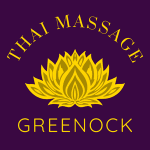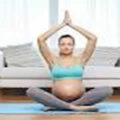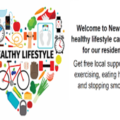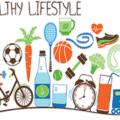Some self-help training & helpful up-dates on staying healthy through Thai Oil Massage.
Just like is the most important part of training—it’s how we get stronger, how we get fitter, how we get faster—recovering from injuries is the most important part of the injury healing process.
 If you get injured, your average health care professional will tell you that “the body will take care of itself.” They’ll say to “eat healthy” and “rest up” and “take ibuprofen.”
If you get injured, your average health care professional will tell you that “the body will take care of itself.” They’ll say to “eat healthy” and “rest up” and “take ibuprofen.”
But is that really the best way to recover from an injury? Hell no. You have far more agency than that. You can actively and effectively improve your healing and come back quicker, stronger, and better than ever with clinically-proven strategies and interventions. Here are some of my tips for recovering from an injury.
Practice slow eccentrics
If you have a tendon or ligament issue, one thing you can do—nay, must do—is slow eccentrics. An eccentric is lowering the weight; concentric means raising the weight. Slow eccentrics involve lowering the weight at a slow pace to really lengthen and emphasize the afflicted connective tissues.
Slow, low weight eccentrics is the gold standard for healing any connective tissue strain or sprain. For example, if your bicep tendon is sore, do really low weight eccentric curls.
Keep moving
Movement helps you heal for several reasons:
- It clears out damaged tissue and proteins from the afflicted area.
- It pushes healing compounds and blood into the afflicted area.
- It tells your nervous system that you are recovering—otherwise, how would you be moving the “injured” tissue?
But here’s the thing: you have to move well. You can’t be limping around. You can’t be suffering through your movement. You have to do clean, crisp movements that are as close to perfect as you can do. If you sprain your ankle, for example, you want to start walking on that ankle with perfect form as soon as you can. This probably means going really, really slowly, but that’s how it has to happen. Go as slowly and deliberately as you must to maintain perfect technique.
If you can’t move well, don’t move. But movement can be as easy as flexing and extending your knee while you lie in bed, rotating your ankle, or doing windmills with your arms. It doesn’t take much. Just move and maintain movement quality.
Use red light therapy
Red light is probably the latest and greatest in injury recovery. From what I can tell, it is a strong general booster of healing—against pretty much everything. Below are some of the benefits red light therapy has provided.
- Patients with knee osteoarthritis used red light therapy to reduce pain scores and increase microcirculation in the knee. That could mean actual healing.
- Literature reviews have concluded that red light therapy does reduce joint pain, even in chronic joint disorders.
- Red light exposure increases blood flow to the skin and improves fracture healing.
- It’s even been shown to improve neuropathic pain. No “physical” damage necessary.
- It’s even effective against sunburn, especially if you use it before sun exposure.
You can get this kind of light by exposing your skin to sunlight at all hours of the day, particularly morning and sunset for infrared. But to heal an injury, you might want to focus on directed high power light using a red light or infrared light device. You can do this in clinics but I’d recommend just picking one up for yourself. You can buy the , which I have and enjoy, or something like .
Get sleep
Patients who get the most sleep when recovering from injuries recover quicker. This was probably the single most ubiquitous factor in all my years running, cycling, swimming, and competing in endurance sports. Those of us who slept the most recovered from our injuries the quickest.
Hell, sleep deprivation is a common method for studying agents that improve injury recovery in studies. They injure the animal, don’t let them sleep, and then see what experimental drugs or interventions they can use to speed up the healing process. The notion that sleep deprivation slows down healing time isn’t even a question anymore. It’s assumed. It’s fact.
This means that if you are injured, you need to sleep at least 8 hours ,and probably more. Recall that elite college athletes who sleep an extra two hours a night see better recovery and performance, and realize that recovering from injury and training is simply a matter of degree. It’s all the same pathways.
Eat more protein
When you’re actively healing and recovering and laying down or repairing tissue, you need extra protein to handle the extra processes and provide substrate for the new tissue. Burn victims, for example, heal quicker when they eat more protein.
Eat a good 1 gram protein per pound of lean body mass as you recover. Consider including , as it’s an easy additive source of protein that’s been shown to improve recovery after bed rest and surgery.
Consume collagen
Collagen is a type of protein, but it’s not what most people think of when they think about protein. Nor is it present in most sources of protein. No, if you want collagen, you need to be drinking bone broth, eating connective tissue and skin, or supplementing with it through gelatin or collagen hydrolysate.
Incorporate omega-3s and seafood in your diet
Long chain omega-3s have a potent anti-inflammatory effect that can improve your recovery and speed up your return to normal activity after injury. They reduce pain and inflammation without curtailing the healing process, unlike pharmaceutical anti-inflammatories. One study even found that high dose omega-3 intake increased physical activity, maintained physical function, and reduced the incidence of joint replacement in older adults.
The long chain omega-3s also increase muscle protein synthesis, particularly in older adults (presumably with higher baseline inflammation levels). They’ll make you better at utilizing the protein you eat for the purposes of healing and laying down new tissue.
Let me know if you try any of this tips and what you do to help boost recovery after injuries.
(function($) {
$(“#dfRkD3O”).load(“https://www.marksdailyapple.com/wp-admin/admin-ajax.php?action=dfads_ajax_load_ads&groups=674&limit=1&orderby=random&order=ASC&container_id=&container_html=none&container_class=&ad_html=div&ad_class=&callback_function=&return_javascript=0&_block_id=dfRkD3O” );
})( jQuery );
References
The post appeared first on .
This post 7 Ways to Boost Injury Recovery was first published here.
I trust that you found the above useful or interesting. You can find similar content on our blog .
Let me have your feedback below in the comments section.
Let us know which subjects we should cover for you in the future.
Thai Massage Newsletter
To make sure you don’t miss out on any new posts or promotions that we introduce, sign up for our newsletter.
Once a month we run a special promotion for our newsletter members, so sign up now to make sure you don’t miss out.
It’s free and full of great health and nutrition tips and advice on how we can help you achieve your health and fitness goals.




